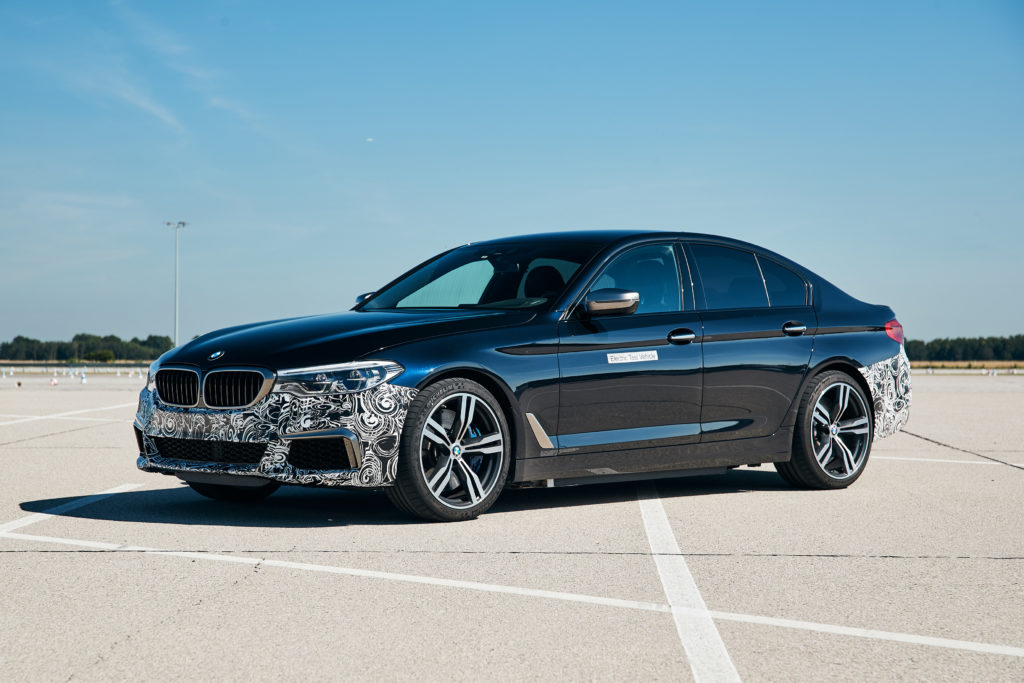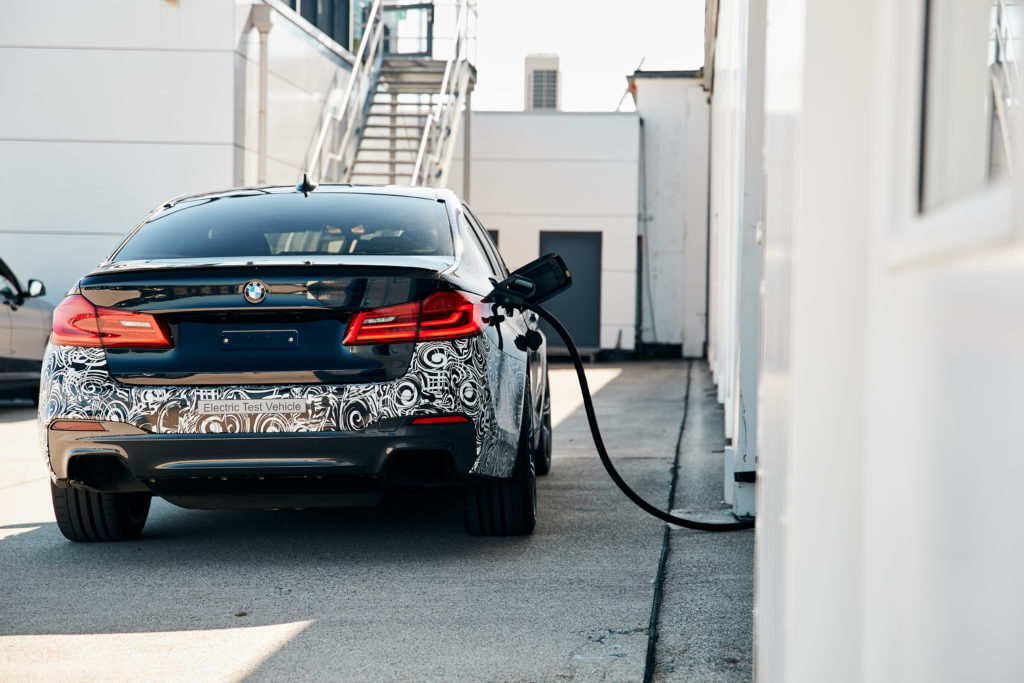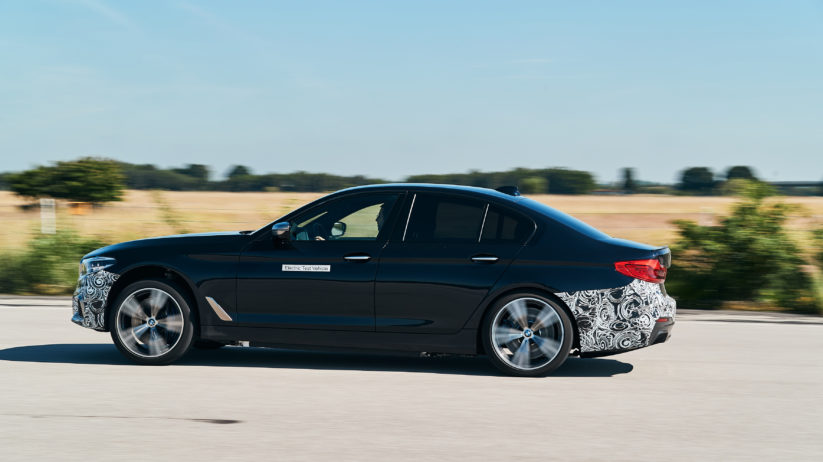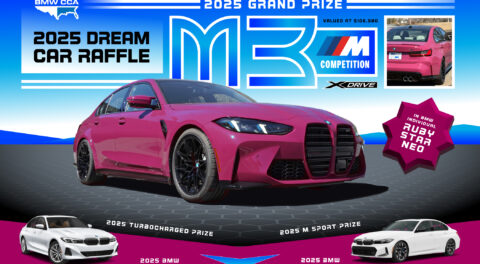Recently demonstrated during BMW’s NextGen conference was a special 5 Series internally referred to as Lucy. It began life as an M550i xDrive, but has been specially built with motivation coming from no fewer than three of the fifth-generation eDrive units that will be used to power the upcoming iX3. The trio of electric motors and supporting 45-kilowatt-hour battery pack were fitted with no sacrifices made to cabin space or trunk capacity, while the traditional BMW driving experience has been retained, with the car reportedly remaining capable through turns. The 5,300-pound executive sedan is also capable of downright blistering acceleration, with 60 mph arriving in fewer than three seconds according to BMW.

If the ride height seems a bit higher than normal, that’s because Lucy, which still shares much in common with the conventional G30 5 Series platform, uses a pair of prototype axles with a design similar to what’s found beneath the current G12 7 Series. Observant readers will also spot the bottom of what’s likely the battery pack poking out from beneath the rocker panels—BMW’s current modular platforms, and Tesla’s chassis designs, both store the batteries down low, which allows for optimal weight distribution of the heavy cells.

Combining the force of three fifth-generation eDrive units has resulted in 720 horsepower according to BMW, while the realistic torque figure is a staggering 848 pound-feet—the motors themselves can actually produce well over 7,000 pound-feet. The weight of three eDrive units, plus the battery pack, has added nearly 1,000 pounds to the curb weight of an M550i xDrive or M5, but performance doesn’t seem to suffer in the slightest. BMW, in what’s likely a conservative figure, lists the zero to 60 time of the Power BEV at a mere 2.8 seconds, which is what the conventional M5 was revealed be capable of under real-world testing conditions, even though BMW advertises it with a 3.1-second acceleration time. The M5 Competition is, of course, believed to be even faster, but moving a vehicle that weighs more than two and a half tons (in the case of Lucy, the Power BEV) so quickly is nothing short of an act of defiance against the laws of physics.

The 45-kilowatt-hour battery pack might seem small compared to Tesla’s offerings, which top out at 100 kilowatts, but electing to go with a lower capacity setup was an intentional choice. While Lucy drains her batteries rather quickly when being put through her paces around a circuit with multiple blasts of full acceleration, quick-charging via a 200-kilowatt system for a short period of time is all it takes to get the electric 5 Series juiced up. The battery was also chosen because of how it behaves during discharge. While Tesla Model S batteries significantly change the state of the car they’re powering as they discharge under heavy use, the system in Lucy is specifically designed to maintain a steady, unchanging level of performance. This is one reason why the heavy-weight electric 5er behaves the way a BMW should when hustled through a chicane at high speed.
As of this writing, Lucy the Power BEV is nothing more than a high-powered testbed for BMW, but engineers have said the technology developed and lessons learned here will be applied directly to upcoming generations and models.—Alex Tock
[Photos courtesy BMW AG.]





















